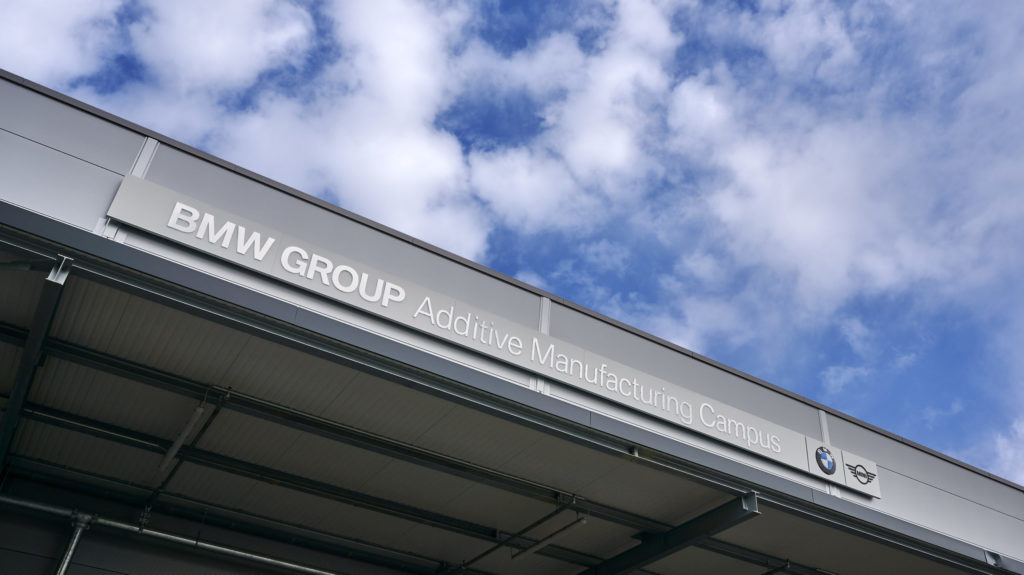The newest addition to the BMW Group’s global decentralized production network is complete and online. It’s the recently finished Additive Manufacturing Campus, which is located in Oberschleissheim, just north of Munich. Initially announced back in 2018 with a planned investment of €10,000,000, the opening ceremony took place this week, and the total cost of the project came in at €15,000,000.
The importance of the new facility will continue to grow over time, as BMW further incorporates 3D printing (referred to as additive manufacturing in brand vernacular) into its series production processes. In late 2018, BMW announced that it has produced 1,000,000 3D-printed parts over the preceding decade, but the automaker’s history with the innovative manufacturing process is not new. In fact, it dates back 30 years to 1990, when the BMW Group’s Rapid Technologies Center commissioned initial developments, with the first prototype parts (intended for concept cars) produced using the company’s own stereolithography machine back in 1991.
Fast forward a quarter-century to 2015, and BMW had moved on from experimental production methods and prototype parts to small-scale series production for motorsport. By April of that year, the company had produced the 500th water pump wheel made on a 3D printer. These water pump wheels were used for the Z4 GT3 in DTM competition.
Just a few years later in 2017, Rolls-Royce found itself in the mix, when BMW began looking at ways to 3D print some of the 10,000 individual parts that go into a Phantom. That same year, the company invested in Desktop Metal, a U.S.-based startup that specializes in 3D-printing metal componentry and streamlined production processes. When BMW announced production of 1,000,000 3D-printed components over the previous decade in 2018, the 1,000,000th part was a window guide rail for an i8 Roadster, a model which marked a significant increase in the use of 3D-printed parts.
For many of these parts, the BMW Group uses HP Multi Jet Fusion technology, which enables the automaker to produce up to 100 window guide rails in a 24-hour period. The window guide rails aren’t the only 3D-printed parts on the i8 Roadster; the model also uses a fixture for securing the soft top made from aluminum alloy. In comparison to the conventional injection-molded plastic counterpart, the alloy piece boasts increased rigidity and weighs less.
With the official opening of the new Additive Manufacturing Campus, things are about to shift into high gear. During 2019, BMW produced approximately 300,000 parts through the use of additive manufacturing, a number that is sure to grow. The new campus currently employs a staff of 80, with roughly 50 systems onsite for manipulating plastic and metal—an additional 50 systems are said to be in operation at other BMW production sites throughout the world.
The gestation period for any new car is long, and that’s why right now, the focus seems to be on research and pre-development. The transition from concept, to prototype, to series production, can be arduous, and that’s why the new Additive Manufacturing Campus is also engaged in the POLYLINE project, which is focused on digitally-linking manufacturing process steps, and the development of consistent quality assurance across the chain of processes—that last bit is critical for 3D-printed parts, which remain in their infancy. Over the long run, project findings indicate that it could reduce costs by up to 50%, which is a staggering figure in the automotive industry. As many of us have grown accustomed to, BMW remains at the forefront of technology devleopment.—Alex Tock
[Photos courtesy BMW AG.]
